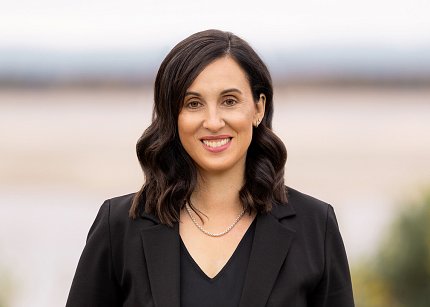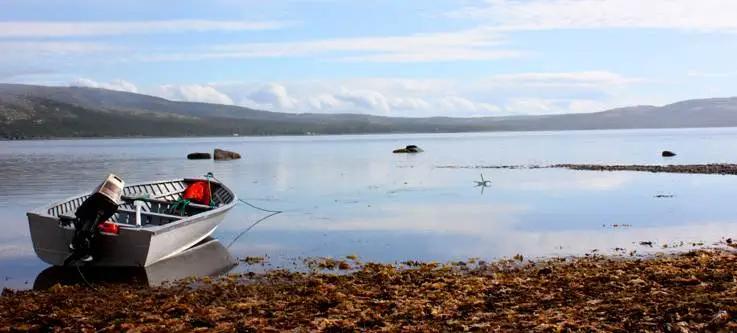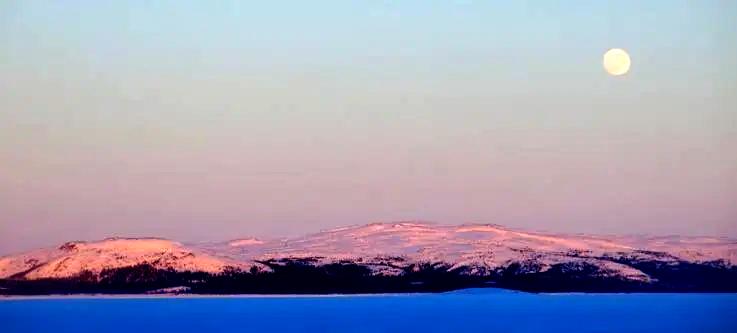Ecological Grief, Anxiety
Cunsolo Discusses Mental Health Impact of Climate Change

Climate change has many far-reaching effects on physical health—such as cardiovascular and respiratory disease, and other injuries/illnesses caused by extreme weather events—but how does it affect mental health?
Dr. Ashlee Cunsolo studies ecological grief and anxiety globally, and has spent 15 years working with Inuit communities in Canada on this topic. She spoke recently with National Institute of Mental Health Director Dr. Joshua Gordon as part of her lecture, “Ecological Grief and Anxiety: A Healthy Response to Climate Change.” The talk was part of the NIMH Director’s Innovation Speaker Series.
Cunsolo has been researching ecological grief and anxiety since 2008. She and a team of researchers were invited by the Inuit community of Rigolet on the North Coast of Labrador, Canada, to study the broader impacts of climate change on health, but Cunsolo pivoted to mental health research after asking community members a crucial question: How do you feel about the changes happening to your environment?

Labrador is one of the fastest-warming places on the planet and is the fastest-warming place in Canada. The climate there is warming almost four times faster than the global average and temperatures have already surpassed the 1.5°C average temperature increase that the rest of the world identifies as a limit under which to stay.
The Inuit “have been on the frontlines of climate change for decades,” Cunsolo said. That involves changes in sea ice, which is a major component of life for them. Inuit are “the People of the Sea Ice” and rely on months-long sea ice cover in winter for things like hunting and traveling. But rapid warming is disrupting this system; sea ice extent in Labrador has already declined by almost 75 percent. The so-called “highway of ice” used to last in previous times from approximately October to May, but now ice does not form until sometimes well into January and begins to melt in April.
One of the residents Cunsolo interviewed posed a profound, existential question in a documentary film, Attutauniujuk Nunami/Lament for the Land: “If there’s no more sea ice, how can we be People of the Sea Ice?”
Depending on climate projections, Labrador is poised for an additional potential 6 to 11°C of warming, and the mood among Rigolet and Nunatsiavut inhabitants is full of concern and anxiety.
Inuit culture and well-being are deeply connected to the land. Having the ability to go out on the land—and particularly the ice—is “as much a part of our life as breathing,” one person told Cunsolo.
The “shoulder seasons” (when ice is melting/forming) inhibits people’s ability to get out on the land—and the length of the shoulder seasons are increasing as the climate warms. Such periods used to last only a couple weeks, but are now stretching six weeks or even longer, Cunsolo said.
Shoulder seasons are an “empty time” for people because they can’t enjoy the outdoor territory. As a result, mental health professionals worry that residents may turn to harmful behavior in order to cope.

Australian researcher and philosopher Glenn Albrecht coined a term that has resonated with many people who are distressed by the changing climate: “solastalgia,” meaning “homesickness while you’re still at home.”
Cunsolo said she hears this sentiment from a lot of people in the region, particularly Elders.
“They haven’t moved but everything around has changed so much that it’s disorienting,” she explained. “People feel homesick for a home environment that’s no longer there.”
Many people around the world are also feeling grief and anxiety related to climate change. Researchers are still learning how to address this kind of slow and cumulative grief, Cunsolo said. There are often mental health resources available for those experiencing natural disasters like wildfires and floods, but how do you learn to grieve “beyond the human” and what sort of resources are available to support those struggling with and experiencing ecological grief?
Cunsolo collaborated recently with Australian researcher Dr. Neville Ellis, who is studying emotional responses to extreme drought; they co-authored a paper on ecological grief. Study participants in both countries had amazingly similar responses to their respective ecological changes.
“You could take conversations and interviews with people from either place and replace sea ices with drought or vice versa, and you couldn’t tell [which group] the quotes were coming from,” Cunsolo said.
Ecological grief and anxiety can affect people from all walks of life, but one group that is drawing researchers’ focus around the world is young people.
A 2021 study of 10,000 people ages 16-25 from multiple countries surveyed participants about their feelings regarding climate change, as well as their thoughts on their government’s response to climate change.
About 84 percent of participants said they were moderately worried or higher, and many also reported a high proportion of negative thoughts, such as “people have failed the planet”—an opinion shared by 83 percent of participants. Mental health professionals are observing increasing numbers of young people who want to talk about their climate grief and anxiety.
So, how can people learn to cope as the climate crisis continues to make itself known?
Researchers are still working to understand the phenomenon’s full effects on mental health, Cunsolo said. But, she also emphasized that feelings of ecological grief and anxiety are rational, reasonable responses to the climate crisis, and “embracing sorrow” is an important part to coping with the pain of climate change.
What do people need moving forward to learn to cope with this mental and emotional burden safely? According to Cunsolo, requirements include “accessible and safe spaces to explore these difficult emotional reactions, the political will to ensure that important strategies and supports are funded, and the research required to strengthen and support approaches of healing and resilience.”
To view a recording of the lecture, visit https://bit.ly/3McbYFB.
